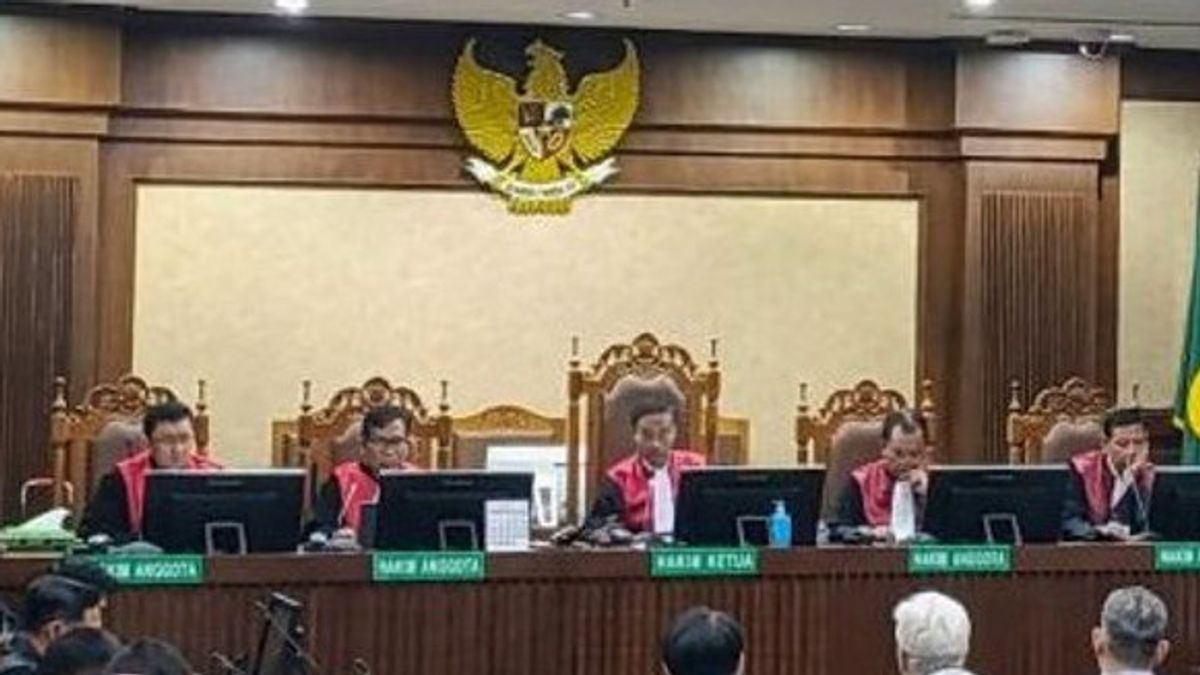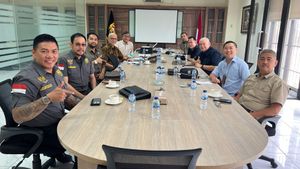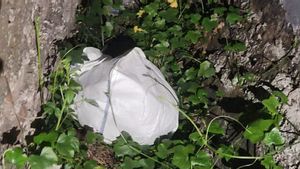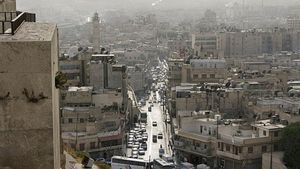JAKARTA - The follow-up trial of the alleged tin corruption against the former President Director of PT Timah Mochtar Riza Pahlevi Tabrani and Helena Lim was held at the Central Jakarta District Court (PN Jakpus).
Dalam agenda sidang tersebut, dua ahli geologi yang sekaligus memiliki sertifikat compact person Indonesia (CPI) juga dihadirkan dalam persidangan lanjutan dugaan korupsi tin tersebut.
The two experts are Syahrul and Albert. Both of them carried out calculations of the opening of tin mining land in Bangka Belitung Province using high-resolution satellite imagery.
He found that the land clearing in 2015-2022 was only 32.75 hectares.
Syahrul provides a comprehensive presentation of geological conditions as well as the impact of mining activities that cover 4 months of data analysis from various sources, including literature studies, interviews with agencies, and satellite data.
"We want to explain that the tin in Bangka Belitung Province is 45.09 percent. 54 percent are not tin carriers," Syahrul said in a release received by VOI, Friday, November 22.
Of the 45.09 percent, it consists of alumcial lead of 22.83 percent and the remaining non-aligned lead.
Syahrul explained that his party carried out a broad account of the impact on mining activities at Mining Business Permits (IUP) every year.
"So we analyze one by one why it takes a long time to analyze each IUP, we count each IUP," he said.
SEE ALSO:
The results of the initial analysis, Syahrul stated, the IUP of PT Timah in Bangka Belitung Province was divided into 59 percent in other Use Areas (APL), 40.17 percent in the Production Forest, and 0.02 percent in the Lindung Forest.
The analysis, Syahrul uses a paid satellite image with a high resolution of 0.5 meters, then compares it with a free one with a resolution of 15 meters.
"So we buy data because we don't believe 100 percent, we compare it with what is paid. If we buy it, we compare it. There is a difference, but it is not too significant, it is still better to pay," he said.
Free satellite imagery, said Syahrul, has object disruptions that can make the analysis results inaccurate due to low resolutions.
"But if the one who gets 0.5 meters is sharper. We can interpret it, it's really more precise," he said.
In interpreting land clearing through satellite imagery, Syahrul divides it into 3 periods, namely the first period before 2015, the second period in 2015-2022, and the third period after 2022.
The first period found an opening of 213 hectares of land, then the second period found land openings of only 32.75 hectares, and at least 20 hectares in the third period.
"We compare the land clearing to overlays with forest areas. So there are openings inside forest areas. Some are in the APL of forest areas," he said.
Syahrul gave an explanation that people who are not experts if they calculate tin land openings, will find it difficult to distinguish between tin and non-t tin land openings.
"In Bangka there are 9 formations, then in Belitung there are approximately 10 formations. What is a formation? The formation is a rock formed there where it has a different type of lithology," he said.
"So it could be, if we look at it, maybe the color is white, but the white one doesn't indicate that it's all used tin additions. For example, in white, it's a sign of addition, among others. For example, maybe Silika Sand Or something else, Kaolin," he added.
In the interpretation of the mining land opening, Syahrul said, high experience and flight hours are needed so that there are no leaks and invalid data.
"This sharpness can be obtained is, someone has experience or experience in flying hours, especially in a commodity. Well, but at first glance, if we use free access, here we can get biased. Seen here the first one, the presence of clouds, these clouds will become ambiguous, meaning that this can be interpreted or not. Then secondly, it can be seen here that there is a fairly large opening, the question is, is this area is a mine opening area or not? Well, this is where it takes sharpness, flight hours to make interpretations. Let's switch to the side of the paid part. Now, if we look at the paid ones, it looks here the difference, very significant," said Syahrul.
In the previous trial, Bambang Hero calculated that environmental losses did not provide details from the calculation of a total IUP of 396,000 hectares. (ha) He only revealed that 75,000 ha were found in forest areas, and 95,000 in non-forest areas.
"The focus was on the 396,000 hectares, and inside we found it turned out that 75,000 hectares were in the forest area, and the 95,000 hectares were in non-forest areas," said Bambang (Custodic District Court), Thursday, November 14, 2024.
The English, Chinese, Japanese, Arabic, and French versions are automatically generated by the AI. So there may still be inaccuracies in translating, please always see Indonesian as our main language. (system supported by DigitalSiber.id)
















